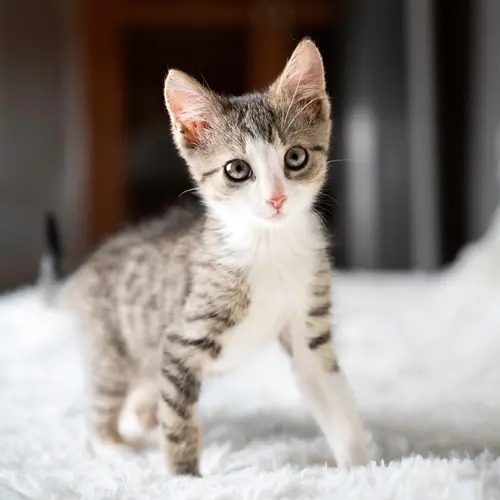Turtles are unique pets that are entertaining to learn about and watch. Pet turtle care doesn’t involve as much hands-on training as dogs and cats, but turtles have particular needs like appropriately-sized tanks, UVB light, and the right kind of diet. Without an appropriate feeding plan, your turtle could get sick or die, so it’s important to understand what to feed them, how often, and what to do if they don’t eat.
Turtle Diet
The right diet for your turtle depends on their size, species, age, habitat, and other details.
What to feed them. Generally, pet turtles are omnivores, meaning that they eat both meat and plants. A typical adult pet turtle diet should include animal products, vegetables, and fruits. Younger turtles between about 7 to 10 years old usually need a larger share of animal-sourced foods. The percentage of animal and vegetable foods your pet turtle needs depends on their species.
Animal food sources. Animal-based food sources for turtles can include processed pet foods like drained sardines, turtle pellets, and trout chow. You can also feed them cooked chicken, beef, and turkey. Live prey can include moths, crickets, shrimp, krill, feeder fish, and worms. Make sure you get insects from a pet store or undeveloped field, or raise them yourself, to ensure quality and safety.
Plant food sources. Plant-based food sources for your pet turtle should mostly be leafy greens like collards, dandelions, and mustard greens. Some of these vegetables, such as chives, parsley, and spinach, contain high levels of chemicals called oxalates, which you should avoid.
Fruits can include apples, cantaloupe, bananas, berries, and mangoes. You can also feed them non-toxic aquatic plants like water hyacinth, water lettuce, and duckweed.
How often to feed them. Feed an adult turtle once every day or two, and a juvenile one to two times a day, though this can vary depending on the species.
How much to feed them. The amount of food to give your pet turtle depends on its species. As a general rule, especially for pellets and other non-living foods, only let your turtle eat as much as they can within about 20 minutes and then remove any leftovers.
How to serve the food. Aquatic turtles and land turtles have different preferences when it comes to how they eat their food. Aquatic turtles only eat underwater, so you’ll need to place food in their water tank. If you have a land turtle, place its food on a flat, hard surface like a rock, or on grass. Many turtle owners also choose to chop a mix of vegetables to feed them, so the turtle isn't just eating one type and avoiding other nutritious plants they might not like as much.
Be species specific. Different species of turtles have varying dietary requirements. Research the nutritional needs of your turtle’s species, and contact your veterinarian with any questions or concerns.
Common Concerns for Feeding Pet Turtles
Overfeeding. Turtles can become obese just like humans and many other animals. Overfeeding your turtle can make them gain excess fat, causing them trouble when pulling their arms and legs into their shell. To avoid overfeeding, make sure your turtle lives in a big enough space to move freely. At minimum, tanks should be 30 gallons for turtles up to 6 inches long, and up to 125 gallons for turtles over 8 inches long. Feeding your turtle live prey also lets them hunt and get exercise.
Vitamin deficiency. Turtles are prone to vitamin A deficiency if their diet isn’t right. Symptoms of too little vitamin A in turtles include a decrease in appetite, eyelid and ear swelling, kidney failure, and lung infections.
Turtles need lots of foods with vitamin A, so choose plants like carrots, squash, bell peppers, and other red, orange, and yellow vegetables. Avoid vegetables with low nutritional value like lettuce and celery. To treat Vitamin A deficiency, a veterinarian may recommend Vitamin A treatments injected or taken by mouth.
Hygiene. Turtles often defecate while they eat, so keeping their food in a separate container can help them avoid accidentally eating feces. Clean any uneaten food out of their tank regularly so that it doesn’t grow unwanted bacteria and algae.
What to do if your turtle won’t eat. If your turtle isn’t eating enough, it could be a sign of illness, but other factors might be at play. Make sure your tank’s temperature and water temperature, lighting, and size are ideal for your turtle’s species. Hibernation and stress can also lead to lack of appetite in turtles. Check with a veterinarian about any symptoms and behaviors, and make a visit if symptoms don’t improve after you make changes.

